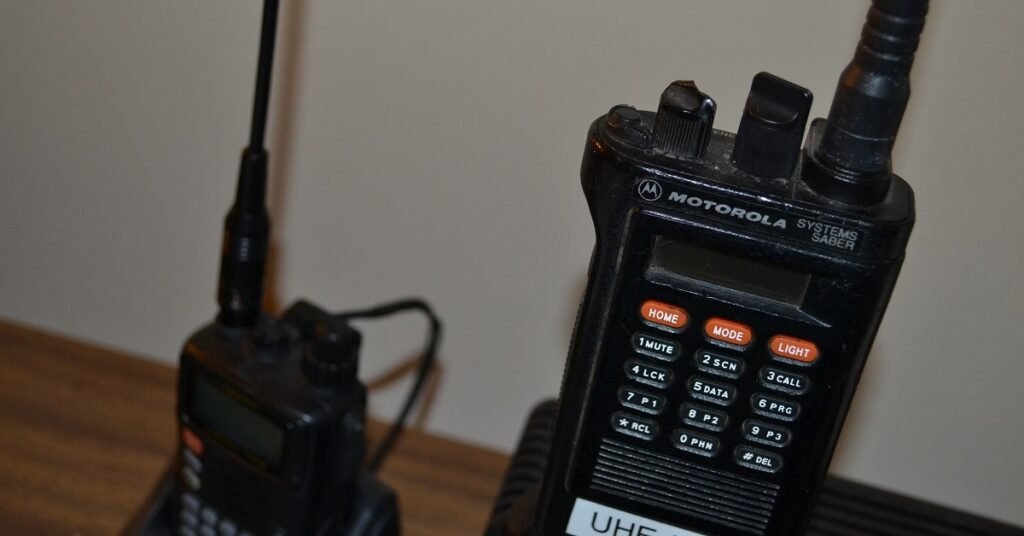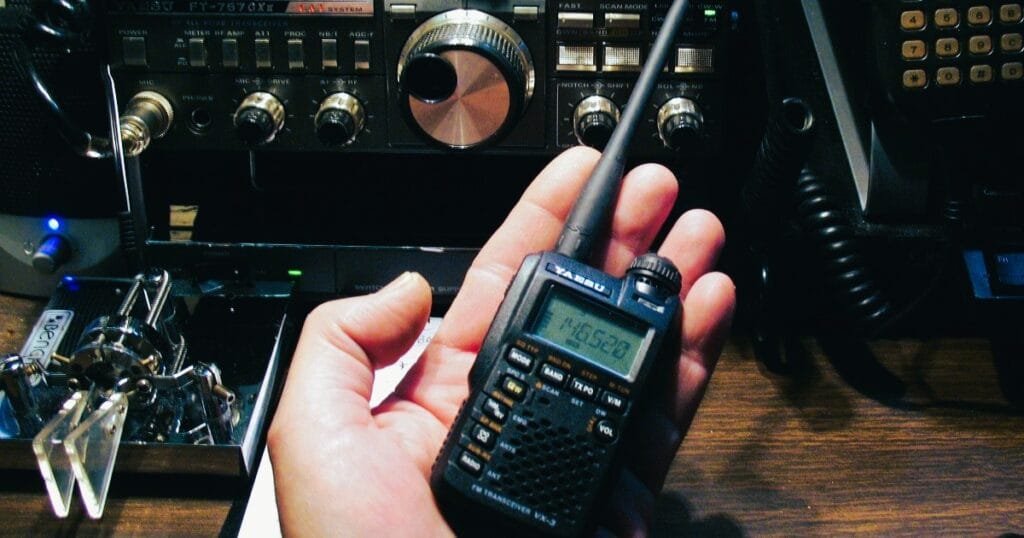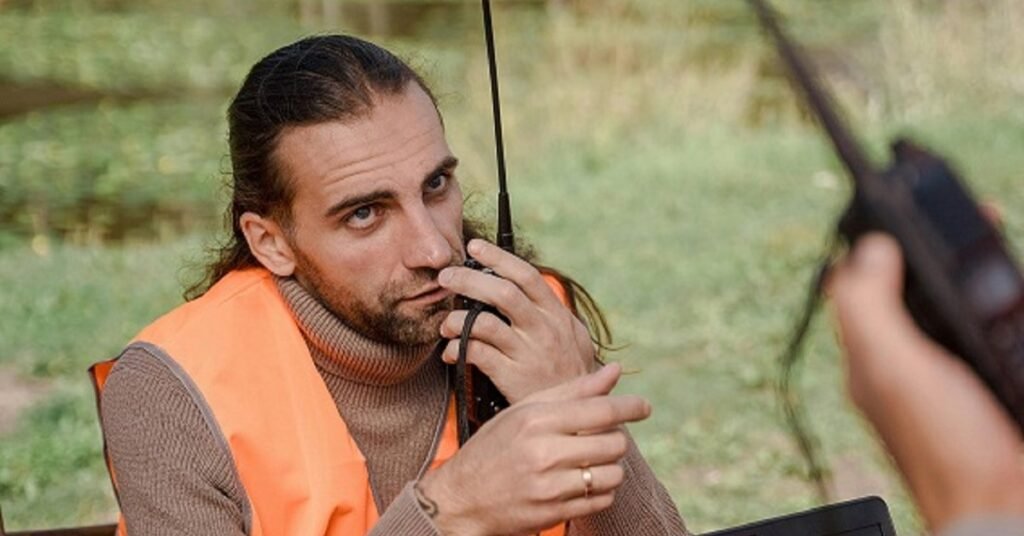Table of Contents
ToggleHow Does a Walkie Talkie Connect To Another Walkie Talkie? Radio Waves Review
Imagine this: You are in the woods all alone, only you and animals. Without a signal, an internet connection or pretty much anything else for that matter; your mobile phone is useless. And suddenly, you hear that sound crackling out from seemingly nowhere! The voice, as clear and loud in your walkie-talkie. How on earth did that happen? Walkie-talkies seem to be these funky little devices that can work wonders, yet the science behind their communication without satellites or mobile towers will turn out pretty interesting. In this radio waves review, let’s take a deep dive into how these tiny miracles keep us connected to the world even in radiation-soaked wilderness.
The Magic Ingredient: Radio Waves
On the outside, a walkie-talkie seems rather elementary; it has only a speaker, microphone and an antenna connected to some internal circuits that are built for one purpose—to rely on radio waves (more specifically electromagnetic waves in general) they can be sent very far. These waves hit the speed of light, 186,000 miles per second in double quick time. Quick enough to take the planet around 7 times a second!
When you hit the PTT button on your walkie talkie, it starts scanning radio signals around. Your device would be like, “Hello…is there anyone home?” The internal systems of an amateur radio are picking up these signal waves from the surrounding environment, and it does that through a wire-shaped or whip antenna connected to its circuitry. These circuits turn those impulses into sound, and what do you know? The speaker will allow your friend to speak.
Normally our walkie-talkie stands in receiving mode or you can say non-transmitting mode. Only if you push the PTT button which is actually a Push-to-Talk button, it activates the transmitter and your walkie talkie will switch from receiving mode into transmission to listen and send your voice. Once you speak, and that microphone collects your words they are turned into electromagnetic data then sent via the antenna as radio waves. This is how your message goes through air to other walkie-talkies. It is as if your voice is put on a rollercoaster of rapid ride in the invisible world so it gets to its destination.
Electromagnetic Spectrum: Walkie Talkie’s Playground
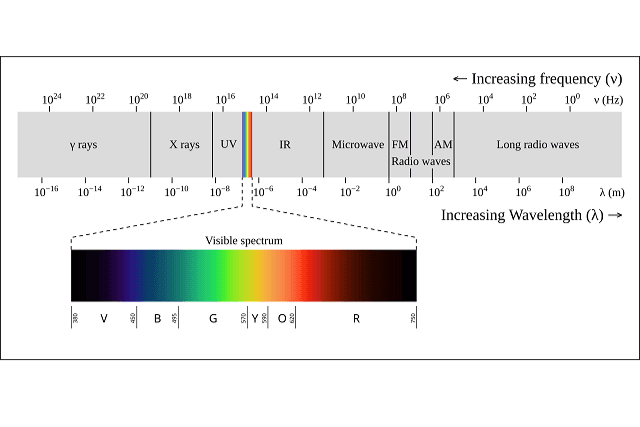
Radio waves comprise a very small fraction of the electromagnetic spectrum. On the other hand, they make incredibly strong communicators. RW of radio waves are a kind of electromagnetic radiation which can travel over a long distance. Some of them can go through walls and can carry complex messages like voice.
Walkie-talkies are often on some VHF (Very High Frequency) or UHF (Ultra High Frequency) frequencies. These frequency bands are akin to specific lanes on a freeway, ensuring that your walkie-talkies don’t mess with other equipment in the area (say for example TV broadcasts or emergency services).
VHF or UHF: Which Frequency Works Best?
The main portable radio frequency band is High Frequency (VHF) and Ultra High Frequency (UHF). They each have their benefits, of course and the choice between them is basically where you want to use your gadgets.
For extensive open locations there is no defeating VHF broadcasting for long range comms. Smaller quadcopters are ideally suited for environments where there is very little to get in the way, such as open fields and woodlands or even over water. VHF waves carry farther over flat land so are great for hiking/ walking/ running. Unfortunately, such systems are not great for use in buildings or congested urban areas.
UHF signals are shorter, but much better than VHF in passing through objects like walls or trees. This is why walkie-talkies that are used in cities, warehouses or busy events often use a UHF frequency. While offering a wider area than VHF, the signal does not cut through wide areas quite as high yet performance is superior in complicated surroundings where line-of-sight contact may not be achievable.
The frequency band your walkie-talkie uses also has a lot to say about the quality of communication you get. VHF: If you are surveying in the woods or working on an open field, a VHF based collar might be your best alternative. But if you are in a real concrete maze, then UHF may be the better alternative.
Understand more about which is superior. Click here.
The Real Technical Stuff: Line of Sight vs. Propagation
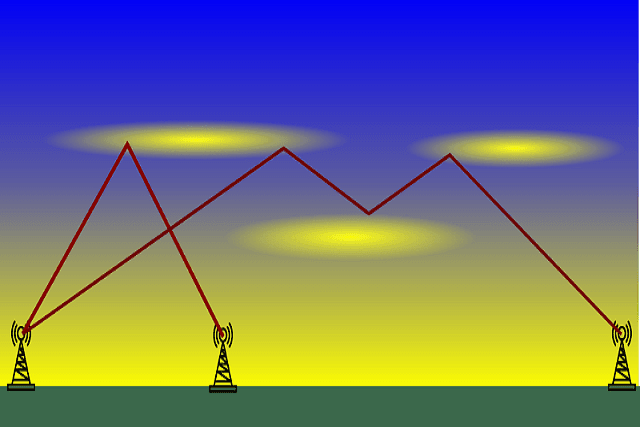
It’s as obvious as it sounds…Line of Sight Communication. Note: the walkie-talkie must have a straight line to be able to communicate with the other device. Imagine that you are playing catch – if there is a building, hill or forest between yourself and the person with whom you’re throwing the ball – it will be far more difficult to properly position your hands to effectively catch the baseball. Radio waves work the same way. As long as there is not any barrier, your signal passes with ease. Though if you find yourself on one side of a mountain or your friend is on the other, it could have more difficulty signaling them.
Still, on the other hand your walkie-talkies may work due to propagation even if you cannot hear the opposite person. Propagation is how radio waves travel through the environment (which may or may not be a straight line!) The environment, and even items like trees and buildings can bounce radio signals. This kind of bouncing can extend your signal range so that you are able to interact with larger distances. But it also makes things less predictable. The weather, air conditions(including the shift in wind(mountain or hill), and last but not least the geography affect how well this signal travels. Meaning, while propagation is helpful for keeping everyone in the loop, it can also be quite chaotic.
In a crazy city environment with lots of high buildings, your radio waves might just as well be bouncing wild like pinballs making the communication computerized. In contrast, your signal might go a lot further and suffer fewer interruptions if you are in the open field or at a mountain top with less obstruction.
The Role of Repeaters
Next, we speak on repeaters that can help to extend the range of your signal. They are devices that take your walkie-talkie signal and output it at a higher power. The repeaters are basically hopping points a.k.a relaying stations of your signal. If you are operating in a place filled with considerable blockages, such as buildings and mountains etc., using repeaters can be very useful since one’s signal jumps over them or moves even further away.
Repeaters are especially good in ham radio nets where operators talk long distances. As a part of the newer generation reading this ham radio review you might not have understood it as well, but repeaters are crucial in making long distance communication doable without using huge antenna or high power output.
Read more about types of repeater, how it is set up, best coverage and top brands. Read more here.
Connecting the Dots: How Walkie-Talkies Find Each Other
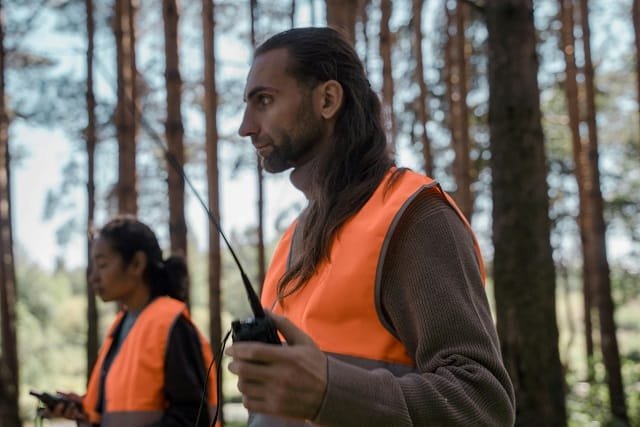
At this point, we understand how they communicate and signal with these walkie-talkies. Now let us explain to them in detail that from where do those two brands of Walkie- Talkies find each other.scrollHeight After all, your walkie-talkie has no idea which specific device you are attempting to connect with; it needs some help in the way of radio frequencies.
Walkie-talkies use these highways in air called radio frequencies (in short – RF), the specified bands of released frequency that supports IPU. To send, all devices in a group need to be on the same frequency. For instance, when everyone is on the same frequency of transmission, then maybe all walkie-talkies could receive and process radio waves communicating that message.
In order to communicate, walkie-talkies need to both be in the same band and then turned into a common frequency inside that band. Put simply, if your entirety is on a common page—literally tuned to the same frequency —your walkie-talkies will be able to “hear” one another when they send signals.
What if you are on a frequency close to another? This is where privacy codes (often referred to as sub-channels or CTCSS/DCS tones) come in. These codes act like a proxy of another level for your walkie-talkie. Even groups using the same frequency might use different privacy codes so that they don’t hear each other’s talk. Think of it like an inside joke that only your crew knows.
Click here to check and tap into the nuances of CTCSS et DCS codes.
Why Frequencies Matter: It’s Not Just a Numbers Game
Familiarizing yourself with your frequencies is more than just a tip when using walkie-talkies, it applies to effective communication. But, if you mix a walkie-talkie with different frequencies of other two devices — it is like talking in one language for three languages. You are talking, you both are against each other.
And that is where things may well get really interesting. As you read from any ham review, the frequencies can vary all over! between devices to manufacturers, even some from the region. Because of this, you must also understand how to make contact with the others in your group at different frequency intervals if you plan on using a walkie talkie that is not produced by the identical company as yet another member. If you´re not on the same frequency, it´s like listening to FM on your radio and someone else is all out AM… no chance that conversation will come through.
Different brands of walkie-talkies may sometimes use slightly different frequency bands within the same radio service as well. One might use VHF, another UHF and so forth. If not done properly, it can also cause communication gaps. The frequency range, and channel compatibility are the two most critical things to check when mixing and matching devices.
That is where the ham radio frequency chart comes in. Learn more here.
What About Obstacles? Can They Block Your Signal?
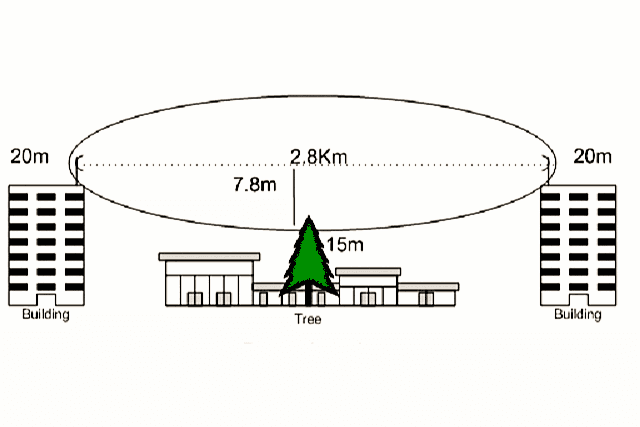
This might raise a question in our heads : What If there are things/ walls between the two walkie- talkies? “Can they block my signal?” The short answer is yes, but the long and complex one follows shortly.
Signs are received over walkie-talkies, which can also depend on various factors such as buildings, trees and mountains to even weather. Now this is where line of sight becomes vital again. When you have a nice and clean path from your walkie-talkie to the other one, then communication with it will be much simpler. However, should there be something as large through the path of your signal (e.g. a mountain) it will not reach its destination consequently and if at all communicating with anything else behind this vertical obstruction, is imminent to fail also.
But using a ham radio or high-powered walkie-talkie will likely have more success. The higher frequencies and stronger transmissions that these gadgets employ lend them the ability to be used to communicate across obstructions. For example, if you need to maintain connection between two 220V patches, you may be considering a repeater (something that boosts your signal range with this guide link).
The Role of Antennas
The unsung heroes of radio transmission are the antennas. In difficult operating conditions, a good antenna can make the difference in how well your walkie-talkie works. One place you can always start if looking to add range or improve quality for your signal is upgrading the antenna.
The length and design of the antenna affect how well it broadcasts, over what distance, as well as receives signals. The longer antennas typically will give you better range but they are less portable. A few different types of walkie-talkies are normally completely fixed, however some have a antenna that is detachable and/or able to be substituted for other less or more reliable antennas. This could mean you are taking one and putting the other on, such as using a bigger antenna for outdoor activities so it can be heard further but use smaller ones to talk down your street.
Final Thoughts: The Wonders of Walkie Talkie Communication
Walkie-talkies do not offer the slew of lovely features comparable to smartphones nowadays, but they are still remarkable technology instruments that keep us connected in places where most modes of communication fail. If you’re out hiking mountains, camping in the woods, or even just trying to communicate across a massive event area where cell service is spotty at best, walkie-talkies are your best bet.
Walkie-talkies rely on the magic of radio waves to turn something that sounds like sorcery into a useful communication tool. Sure they do not use satellites or cell towers, but neither need to because it is the power of wireless airwaves.
